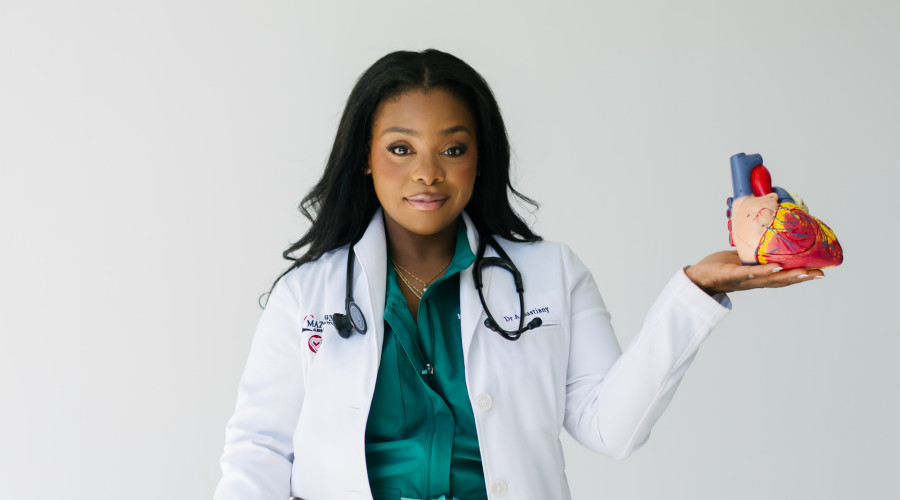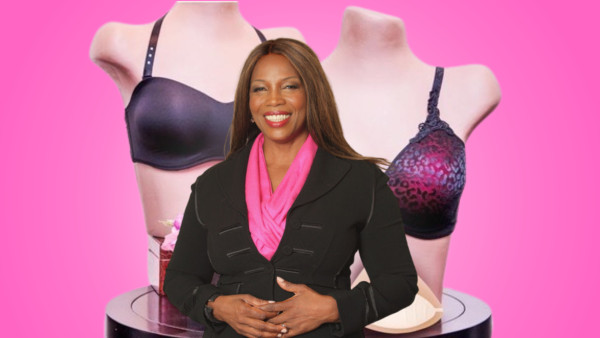Today, Dr. Alexandra Bastiany is the only Black woman in Canada threading catheters through blocked arteries, stopping heart attacks in real-time, and performing procedures so delicate they’re measured in millimetres.
She's achieved more than many do in a lifetime. Her work with Black and Indigenous communities, her role at Thunder Bay Regional Health Sciences Centre, and her social media advocacy for women’s heart health earned her a King Charles III Coronation Medal—Canada’s recognition for significant community contributions.
Her historic achievement as Canada’s first Black woman interventional cardiologist is a testament to her success, but it's also a reflection of a system that never expected her to succeed in the first place. The extra scrutiny, the constant need to prove you belong, the weight of representing an entire community.
“I’m not excited about being the first,” she says, her Montreal accent cutting through the politeness expected of medical professionals. “Being the first in 2025 means we failed somewhere along the way. I want to talk about how we fix that.”
{https://www.instagram.com/p/DGGbAEAOE1w/}
The reality behind the breakthrough
Bastiany’s journey exposes uncomfortable truths about the diversity problem in medicine. While medical schools have made strides in enrolling more students of diverse backgrounds, something happens as these students progress through training. The “leaky pipeline” phenomenon shows racialized students disappearing as specialties become more competitive and prestigious.
It means you’re walking into rooms where no one looks like you, and sometimes, no one expects you to be the expert. “I get told I look too young to be a doctor all the time,” Bastiany admits. But the pressure goes deeper.
Black medical students and residents report being “over-policed” by supervisors and subjected to heightened scrutiny that their white counterparts rarely face. They navigate micro and macro aggressions while being expected to remain professionally composed. Many learn to “code-switch” or, as Bastiany puts it, “mute their Blackness” to survive academic medicine.
The result? A medical landscape where, according to the Black Physicians’ Association of Ontario Black physicians represent just 2.3% of all doctors in Ontario. In interventional cardiology—a field requiring years of specialized training and significant institutional support—that number drops to nearly zero for Black women.
The road less travelled
Born in Montreal to Haitian immigrant parents, Bastiany grew up in a home where hard work was non-negotiable and community was everything. Her father, a chemist, and her mother, a nurse, modelled excellence—but also humility. “My dad is the type of person who treats the janitor and the CEO the same way,” she says. That lesson stuck.
Medicine wasn’t always the dream. “I initially wanted to be a teacher,” she laughs. But her love of science, leadership, and helping others pulled her toward medicine. She attended the University of Montreal for both medical school and her residencies, then moved to the University of Alberta for a two-year fellowship in interventional cardiology—a field where women, especially Black women, are rare.
From breakthrough to bridge-building
Bastiany is quick to point out that her story goes far beyond personal achievement. “It’s a symbol. It’s not about me, but what I represent for people who look like me.”
She’s using her platform to drive systemic change through mentorship, healthcare equity advocacy, and honest conversations about representation because diversity across the medical field leads to better patient outcomes. In the words of Bastiany: “It improves compliance, builds trust, and helps patients feel truly seen and heard.”
Bastiany’s also putting this vision into action, publishing articles on empowering women to take charge of their heart health and championing the idea that individual success only matters if it sparks broader change. “When patients are engaged and represented, everyone benefits,” she says.
For Bastiany, every procedure she performs serves a dual purpose: saving lives and proving that Black women belong in medicine’s most elite specialties. Until true representation is the norm at every level of healthcare, she will keep doing what she does best—saving hearts, opening doors, and making sure Black excellence is no longer the exception but the expectation.

 By
By 







